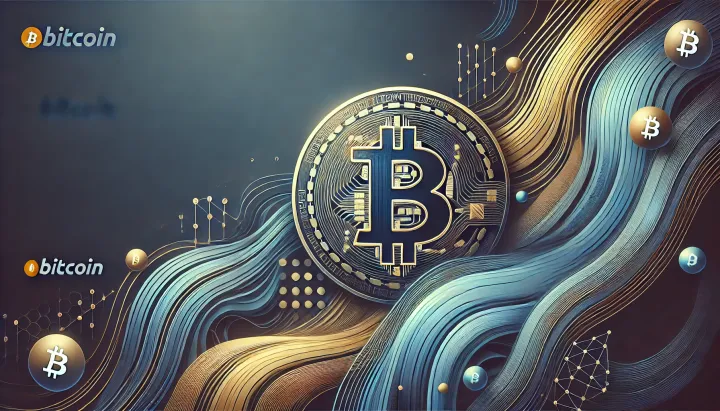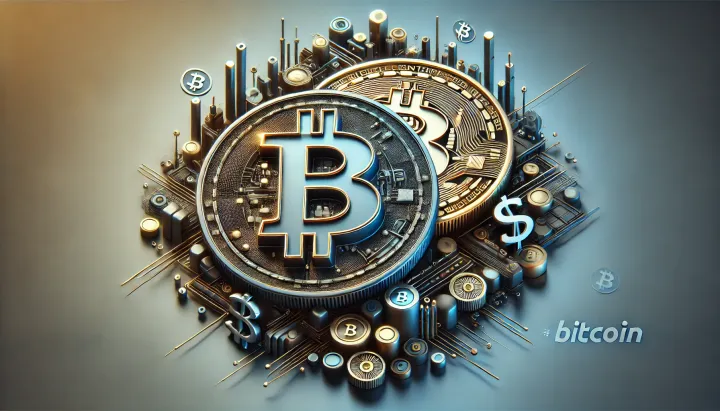Global Dollar Dynamics & Bitcoin Challenges
On the April 04, 2025 episode of What Bitcoin Did with Brent Johnson examines how global liquidity flows and sovereign debt dynamics reinforce US dollar strength through the dollar milkshake theory.

- My 'briefing notes' summarize the content of podcast episodes; they do not reflect my own views.
- They contain (1) a summary of podcast content, (2) potential information gaps, and (3) some speculative views on wider Bitcoin implications.
- Pay attention to broadcast dates (I often summarize older episodes)
- Some episodes I summarize may be sponsored: don't trust, verify, if the information you are looking for is to be used for decision-making.
Summary
On the April 04, 2025 episode of What Bitcoin Did with Brent Johnson examines how global liquidity flows and sovereign debt dynamics reinforce US dollar strength through the dollar milkshake theory. Johnson details the impact of interest rate shifts and the triffin dilemma on international capital flows. The discussion also critiques Bitcoin’s volatility and its evolving role as a speculative asset.
Take-Home Messages
- Dollar Milkshake: Global liquidity flows bolster the US dollar amid mounting sovereign debt.
- Interest Rate Impact: Shifts in US rates influence international capital flows and asset valuations.
- Triffin Dilemma: Domestic policy needs conflict with global currency demands, creating systemic tension.
- Bitcoin Volatility: Extreme price swings hinder Bitcoin’s function as a stable medium of exchange.
- Coordinated Policy: Integrated domestic and international strategies are vital for managing emerging financial risks.
Overview
Brent Johnson introduces the dollar milkshake theory by explaining how global liquidity is funneled into the US dollar, reinforcing its dominance even as domestic purchasing power declines. Johnson establishes that the expansive eurodollar market and sovereign debt pressures drive this persistent demand.
He examines how rising US interest rates attract international capital while intensifying the inherent conflict between domestic needs and global obligations—a core element of the triffin dilemma. His analysis underscores the complexity of balancing national monetary policy with global financial dynamics.
The discussion turns to Bitcoin, where Johnson critiques its extreme volatility and limited use as a medium of exchange. He contrasts Bitcoin’s speculative appeal with its practical challenges, questioning its current viability as a stable financial tool.
Finally, Johnson speculates on a potential global financial reset triggered by unsustainable debt levels and shifting liquidity flows. He stresses that future policy decisions and market strategies will be crucial in navigating these transformative economic challenges.
Stakeholder Perspectives
- Investors: Focused on asset performance amid global liquidity shifts and sovereign debt risks.
- Policymakers: Concerned with harmonizing domestic monetary policy with international financial pressures.
- Bitcoin Enthusiasts: Weigh Bitcoin’s speculative potential against its high volatility.
- Financial Institutions: Monitor developments in stable coins and their reinforcement of the US dollar.
- Global Businesses: Assess the impact of currency fluctuations on international trade and credit conditions.
Implications and Future Outlook
The episode highlights significant implications for global monetary policy, where escalating sovereign debt and interest rate shifts may force a rebalancing of international capital flows. These challenges could pressure policymakers to adopt coordinated strategies that address both domestic economic needs and global currency demands.
Asset valuations and market stability are likely to be influenced by continued fluctuations in US interest rates. The interplay between domestic fiscal policy and global liquidity dynamics will remain a key factor for investors and financial institutions alike.
For Bitcoin, its evolution depends on addressing volatility and establishing a more reliable medium of exchange. Future regulatory developments and market adaptations will determine whether Bitcoin can transition from a speculative asset to a stable store of value.
Some Key Information Gaps
- How might escalating sovereign debt levels affect the stability of the US dollar and global markets? This question is critical for understanding systemic risks and informing both policymakers and investors on potential vulnerabilities.
- What are the potential impacts of interest rate fluctuations on the sustainability of the dollar milkshake theory? Addressing this question can clarify how shifts in US monetary policy influence international capital flows.
- In what ways might the triffin dilemma exacerbate global economic instability in the current debt-driven environment? This inquiry is essential for assessing the long-term implications of domestic and global monetary conflicts.
- How can Bitcoin mitigate its price instability to become a more reliable medium of exchange? Exploring this can reveal strategies to enhance Bitcoin’s practical utility beyond speculative investment.
- How might stakeholders prepare for the potential economic disruptions associated with a systemic monetary reset? This question guides the development of contingency plans and informs future research on managing financial crises.
Broader Implications
Global Monetary Stability
The discussion suggests that persistent sovereign debt and interest rate pressures could eventually destabilize the current international financial system. If global debt levels remain unsustainable, a realignment of currency flows may force policymakers to implement drastic measures. Such a reset would have far-reaching effects on global trade, asset valuations, and economic policy frameworks.
Bitcoin’s Evolving Role
Despite its current volatility, Bitcoin may evolve to serve as more than a speculative asset if its market dynamics mature. Increased regulatory clarity and technological improvements could stabilize its price and enhance its function as a medium of exchange. This evolution would have significant implications for digital asset markets and could shift the broader discourse on money and value.



Comments ()